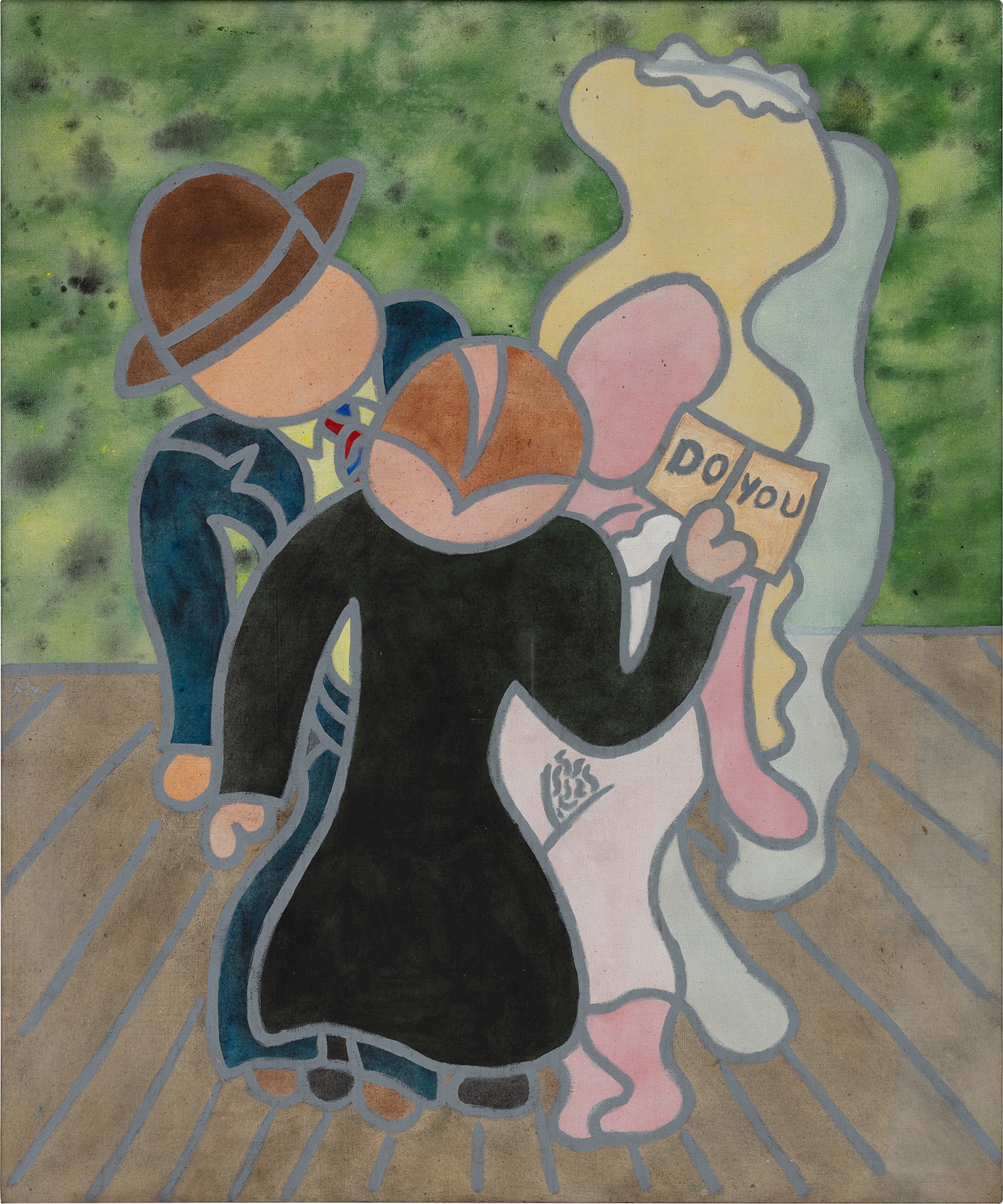

47
William N. Copley
Do You
signed and dated "CPLY 81" center left
acrylic on canvas
67 x 56 in. (170.2 x 142.2 cm)
Painted in 1981.
Further Details
Full-Cataloguing
William N. Copley
American | B. 1919 D. 1996William N. Copley, also known by the name of CPLY, drew attention to himself in the late 1940s by fusing elements of Surrealism and Pop Art. Copley focused on symbols of American pop culture—staples of American society including pin-up girls, cowboys and the flag—and transformed them into more accessible, universal icons that could appeal to both men and women without bias.
In the '70s, Copley distinguished himself from the rest of the Surrealists by attempting to represent the tumultuous relationship between erotic and pornographic symbolism. He celebrated the female body, sexual freedom and, most of all, the promiscuity of America.